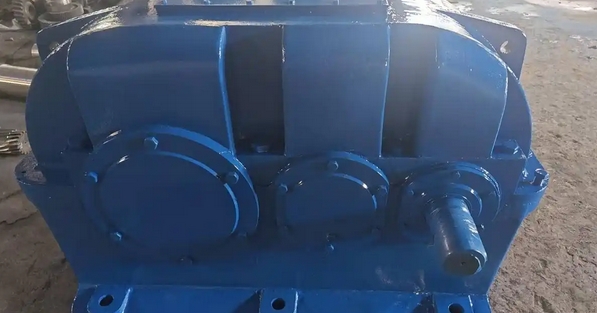How to check if there is any loose screw on the ZLY710-20-1 hard-toothed reducer
Check if the screws of ZLY710-20-1 hard tooth reducer are loose, and refer to the following methods:
Visual inspection:
Directly observe the screws on the gearbox housing, including foot screws, end cap screws, bearing cap screws, etc., to see if there are obvious displacement marks on the screw heads or abnormal phenomena such as rust and dust accumulation around the screws due to looseness.

Check the fastening marks of the screws. If the screws have been tightened correctly before, there are usually paint marks or other identification lines. Check if these marks are still in their original positions. If the marks are offset, it may indicate that the screws are loose.
Manual inspection:
Wear gloves and shake or twist the screws directly with your hands to feel if they are loose. For some smaller screws, you can gently pry them with a screwdriver to check for any signs of movement. However, it should be noted that during manual inspection, one must ensure their own safety and avoid being scratched by the running parts of the gearbox or sharp screw edges.
Gently tap the outer shell and connecting parts of the gearbox and listen for any abnormal sounds. If the screw is loose, it may make a sound different from the tightened state when struck, such as a dull "bang bang" sound or a loose "dada" sound. However, this method requires a certain amount of experience to accurately determine the screw status reflected by the sound.
Tool inspection:
Use a torque wrench to perform torque testing on each screw according to the specifications of the gearbox. Set the torque wrench to the specified torque value of the screw, and then use it to turn the screw. If the screw starts to rotate before reaching the specified torque, it indicates that the screw has become loose and needs to be re tightened to the specified torque.
For some key screws, such as foundation screws and high-speed shaft connection screws, a feeler gauge can be used to check the gap between the screw and the connection surface. If the gap is too large and exceeds the normal range, it may indicate that the screw is loose.
In addition, it is also possible to regularly check whether the screws between the reducer and the connecting components such as the motor and torque plate are loose, as well as whether the anchor bolts of the reducer installation base are loose. At the same time, establish a comprehensive maintenance system, incorporate screw loosening inspection into regular inspections, and record the data from each inspection to track and observe changes in the tightening status of screws.

